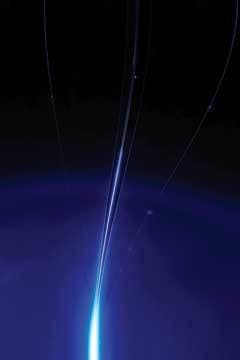Get what you need ... from a certified laser educator
by Teri Gutierrez, RDH, CLE
The rapid rise of lasers in hygiene is generating a great need for dental hygiene laser education. The Academy of Laser Dentistry has established the curriculum and guidelines for dental laser education, which covers all topics required for complete dental laser education. The ALD has also established the Certified Laser Educator (CLE) program. These educators not only have achieved the level of Certified Laser Educator, but they also must have achieved Advanced Proficiency (AP) for at least one laser wavelength as a prerequisite for the CLE program. The first thing the new laser user must do when seeking laser training and education is verify the laser experience, background, and level of laser certification of the person offering the training and education.
Understanding the differences between laser education levels is the first place to start. The minimum level of laser training or certification is the Standard Proficiency (SP) certification. The ALD SP certification is the gold standard of beginning laser education. Many laser companies offer their own laser training courses, but they may not necessarily be SP certification courses. The one-day training course covers many of the same topics and may be presented by a certified laser educator, but still may not meet the guidelines established by the ALD as an SP certification course. There is a wide range of presenters out there providing these courses. Be sure to ask about the level of laser education these presenters hold. You will be surprised to find that some hold nothing more than an SP level of certification. The desired level of laser education for a presenter of these courses would be an AP or CLE.
Laser proficiency
The ALD SP course is a minimum of 12 hours with an oral clinical proficiency exam and a written 75-question exam. During the SP certification course, the laser user learns the minimum required on topics such as laser physics, laser tissue interaction, and laser safety. The presenter must be able to answer all questions regarding these topics and more to turn out laser users who understand the safe and ethical integration of dental lasers into the procedures performed in the dental office. The course includes a lecture with clinical case presentations, a laser lab using a pig jaw to demonstrate technique, followed by the clinical proficiency oral exam. This exam covers laser safety, general set-up and break-down, disposal of used supplies, infection control, and treatment objectives. Then the written exam is done and reviewed with the presenter. Refer to Table 1.
Once the dental laser user has had 18 months of clinical experience with the laser, AP certification is the next level of laser certification. To achieve AP certification, the user has to pass a three-tiered exam process, which includes a written 175-question exam covering all aspects of dental laser education, an advanced clinical proficiency oral exam in front of two laser examiners, and presentation of a minimum of six clinical case studies in front of three laser examiners. This level of laser certification generally takes the user two to three years to complete. The difference in study between the SP and AP certification levels is remarkable. Outside study with additional text references is required. Study materials such as the Dental Clinics of North America “Lasers in Dentistry” is highly recommended, as well as other dental laser textbooks. Once the AP certification is achieved, the dental laser user has definitively proved his or her proficiency and knowledge of dental lasers. Refer to Table 2.
Certified laser educator
After passing the AP certification, the laser user is eligible to take the laser educator’s course given by the ALD. This course has a limited enrollment and is offered only every two to three years. It is a three-day course designed to provide the information necessary to understand learning processes that potential students go through. Not only is AP certification a prerequisite for this course, but the laser users attending this course have many course materials and homework to complete prior to beginning the actual course. These include materials such as teaching agendas and printed materials designed for dental laser education. The dental laser users who have completed the Certified Laser Educator course are those most desired for dental laser training or certification course presenters. Refer to Table 3.
When a new laser user enrolls in a laser training course, be sure to find out who the laser educator will be. Ask questions of the person or company providing the laser course, contact the ALD, or search the Internet for information on this educator. Clinicians want to learn from a laser user who has completed the highest level of laser education. Some statements that may indicate an ineffective laser educator are, “This is the way I do it so you should too,” or “Just do this and you will be fine.” These statements teach nothing. The presenter must be able to explain what is happening during treatment and clarify to the new users through clinical facts what is going to happen as a result of laser treatment.
Lasers are opening up a whole new level of treatment dental clinicians can provide for their patients, and the basic education is where this advanced technology begins its remarkable results. The clinician who doesn’t initially get optimum results from the laser should not shove the device into the corner to collect dust. The wise clinician delves further into laser education and seeks more information in order to make the laser investment pay for itself through increased production and better, even unbelievable, treatment results. Get your laser education from the best available, a Certified Laser Educator.
References
• White J, et al. Curriculum Guidelines and Standards for Dental Laser Education. Academy of Laser Dentistry, 1998.
• Certification committee, Academy of Laser Dentistry.
Table 1
Standard Proficiency (SP) Clinical Proficiency Simulation Sample Topics
Machine safety knowledge
- Laser machine safety mechanisms
- Laser safety officer duties
- Eye protection
- Adverse effects reporting mechanisms
Infection control, set-up, break-down
- Type of delivery system - assembly requirements
- High volume evacuation
- Contaminated and uncontaminated zones
- Laser parameters
- Test fire
Patient management
- Treatment objectives
- Laser technique
- Patient management - anesthesia requirements
- Management of complications
- Healing assessments
This is not intended to be a complete listing of the SP clinical proficiency exam topics.
Table 2
Advanced Proficiency (AP) Requirements
- In-office mentor preceptor program
- University or other accredited dental education program
- Scientific session educational program
- Patient care
- Independent study of literature
This is not intended to be a complete listing of the AP requirements.
Table 3
EDUCATOR PROGRAM REQUIREMENTS
- How to teach - critical thinking
- Learning modalities
- Multiple intelligence - i.e., logical, mathematical, linguistic, inter- and intrapersonal
- How students learn
- Critique and feedback on teaching technique
This is not intended to be a complete listing of the educator program requirements.
Teri Gutierrez, RDH, graduated from Foothill College in 1990 and has been practicing in the general practice setting for nine years. Having attained a Category III Hygiene Mastership from the Academy of Laser Dentistry, Ms. Gutierrez serves as an examiner for the Academy during certification at both local certification sites and the annual conference. Ms. Gutierrez also provides hands-on laser soft tissue training through her consulting business, Soft Tissue Laser Training.







